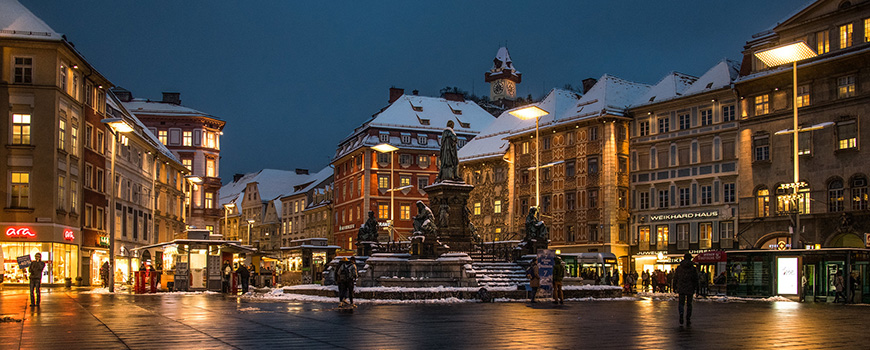Kunsthaus Graz – The “Friendly Alien” by Peter Cook & Colin Fournier
Steiermark, Austria
Phone: +43 316/8017-9200
Website: https://www.museum-joanneum.at/en/kunsthaus-graz

Opened in 2003, the Kunsthaus (Art House) in Graz is one of the most important centers for contemporary arts in Austria.
Located in the historical center of Graz and overlooking the river Mur, the Kunsthaus is housed in an iconic building, designed by British architects Peter Cook and Colin Fournier, famous for its biomorph shape, imposing appearance, and for its peculiar blue-colored external skin – the BIX media facade – which can be used as a gigantic multimedia device. The futuristic architecture of the building has earned it the nickname “Friendly Alien”
Walking around the building, feeling its visual “softness”, glimpsing the surrounding environment mirrored in the building’s translucent cladding, is already part of the visit to the Kunsthaus.
As mentioned above, along with being an urban landmark, the Kunsthaus Graz is also one of the most lively art centers in Austria and regularly accommodates major exhibitions presenting works by international and Austrian contemporary artists, architects, and designers.
The architecture of the Kunsthaus Graz
The main entrance of the Kunsthaus Graz is on LendkaiStreet, near the Mur River’s west bank, and from here you can enjoy an all-encompassing view of it. Otherwise, you can see it in an almost bird’s-eye view from the panoramic terrace of the Schlossberg, when you are relaxing at your coffee table it’s pretty impossible to take no notice of the alien’s blue volume emerging from the red roofs in the city center of Graz. But the best perception of the Kunsthaus can be achieved through a less obvious approach path, for example by arriving from the Kosakenstrasse, because only by slowly circumnavigating its volume it’s possible to appreciate its playful shape at its best and feel almost overcome by the surprise generated by its material contrast or by its bursting softness.
Kunsthaus Graz, view from the Schlossberg hill. Photo © Inexhibit
External view of the Kunsthaus. Photo © Inexhibit
Cross-section
Ground floor plan
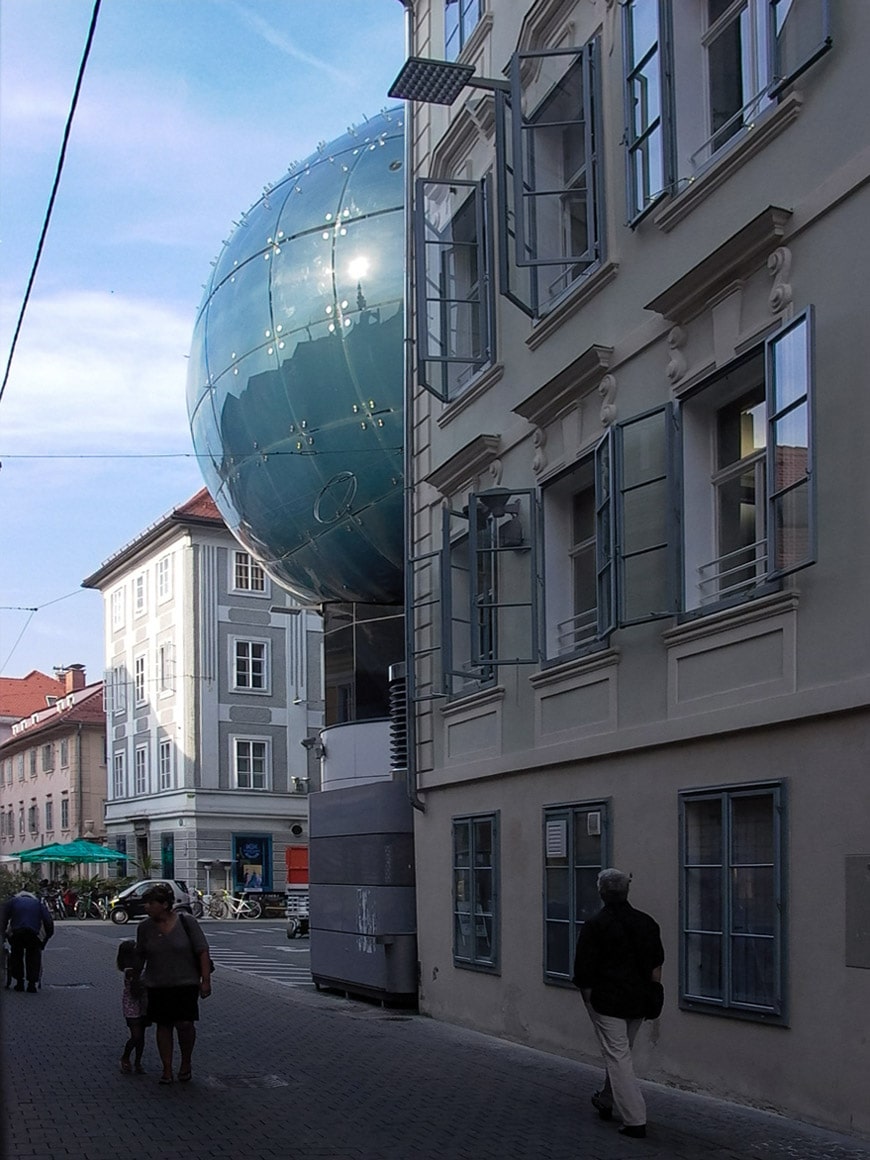
The “Bubble” of the Kunsthaus from Mariahilferstrasse, photo © Inexhibit
The Kunsthaus external skin, of an overwhelming blue color during the daytime, becomes a huge luminous landmark at night. The BIX-Medienfassade, designed by the Berlin-based firm realities:united, is a communication envelope acting as a support for art productions: it not only transfers the Kunsthaus information contents from the inside to the outside but also scatters them throughout the surrounding urban environment.
Kunsthaus Graz, BIX media façade. Photo: Universalmuseum Joanneum, Nicolas Lackner
Aerial view, photo Zepp-Cam
The BIX Media facade at night, photo Universalmuseum Joanneum/N. Lackner
930 circular fluorescent 40 W lamps are integrated into the 900 sqm external skin, through them They make it possible to regulate the brightness of the envelope. Every circular light can be assimilated to a single large pixel, controlled by a central computer. Through this system, it is possible to generate images or even low-definition videos, that can be seen from a long distance, thus transforming the Kunsthaus blue bubble volume into a low-resolution mega screen.
Kunsthaus. Space 01. Photo: Universalmuseum Joanneum, Nicolas Lackner
One of the nozzle windows on the Kunsthaus building’s roof from the upper floor gallery. Photo: © Christian Plach
Kunsthaus. nozzle windows from the “needle”. Photo: © Inexhibit
The interior space, formed by two large exhibition rooms, one stacked over the other, named space-01 and space-02, is as much different as possible from the white neutral spaces typical of many contemporary art exhibition venues. The challenge that the Kunsthaus designers have thrown down to artists and curators is, for every exhibition, to redefine the used space and adopt solutions capable of creating a relationship with a building of a so strong personality and visual strength. Ten years of temporary exhibitions have also made clear what is the best use for both rooms: while the gallery on the lower floor (space 02) is more suitable for exhibitions dedicated to paintings, photography, and video art, the “space 01″ gallery is more appropriate for housing large sculptures and installations
left: an image from the Cittadellarte, Sharing Transformation exhibition (28 September 2012 – 20 January 2013). Photo: UMJ / N. Lackner
right: an image from the Ai Weiwei Interlacing exhibition (16 September 2011 – 11 May 2012)
Photo: UMJ / N. Lackner
An image of the Needle, located on the Kunsthaus top, from which it is possible to enjoy an extraordinary panoramic view over the city. Photo © Christian Plach
An image of the Karl Neubacher exhibition at the Kunsthaus Graz, Photo: UMJ / N. Lackner
Cover image: Kunsthaus Graz, entrance on Lendkal. Photo: Universalmuseum Joanneum, Eduardo Martinez
How our readers rate this museum (you can vote)
copyright Inexhibit 2025 - ISSN: 2283-5474

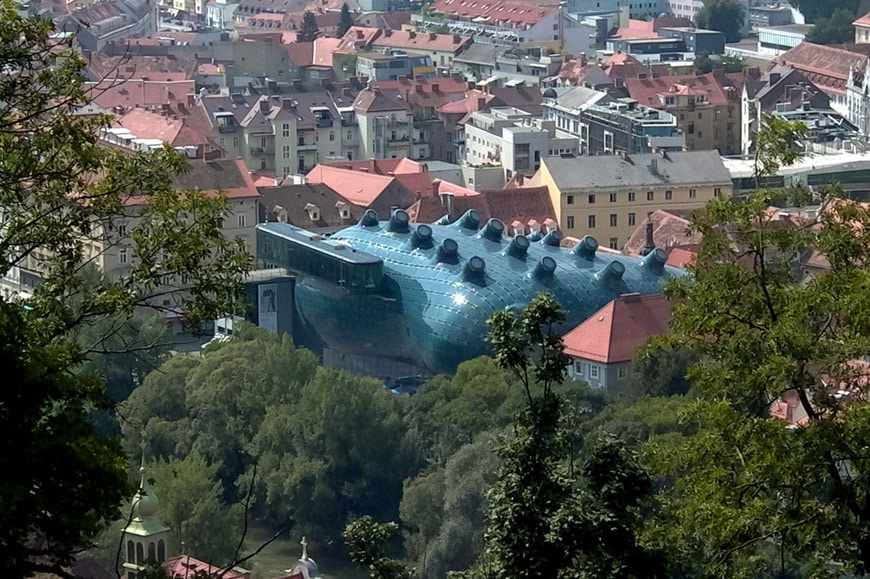
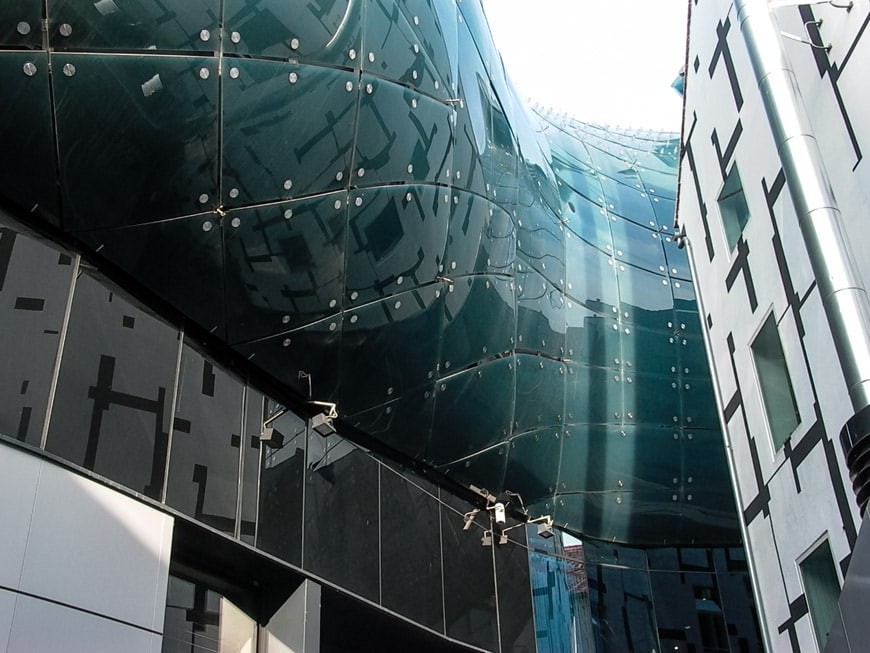
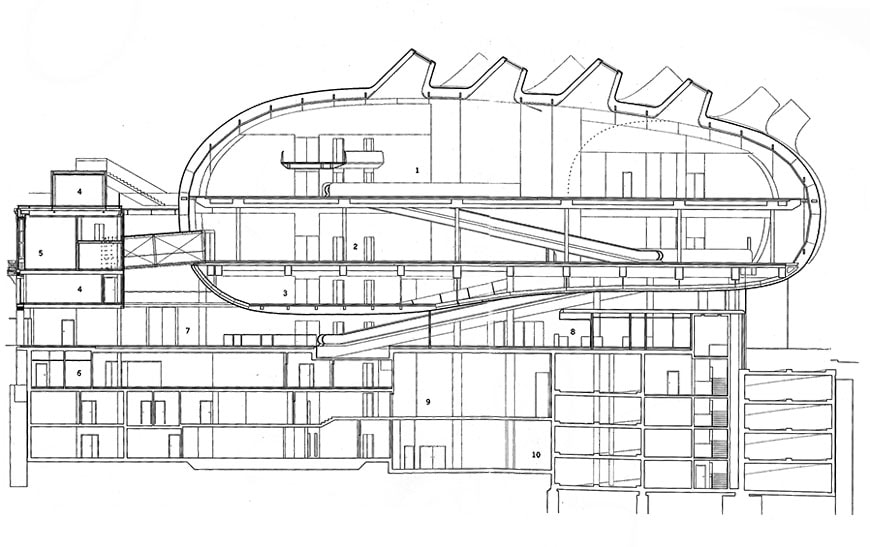
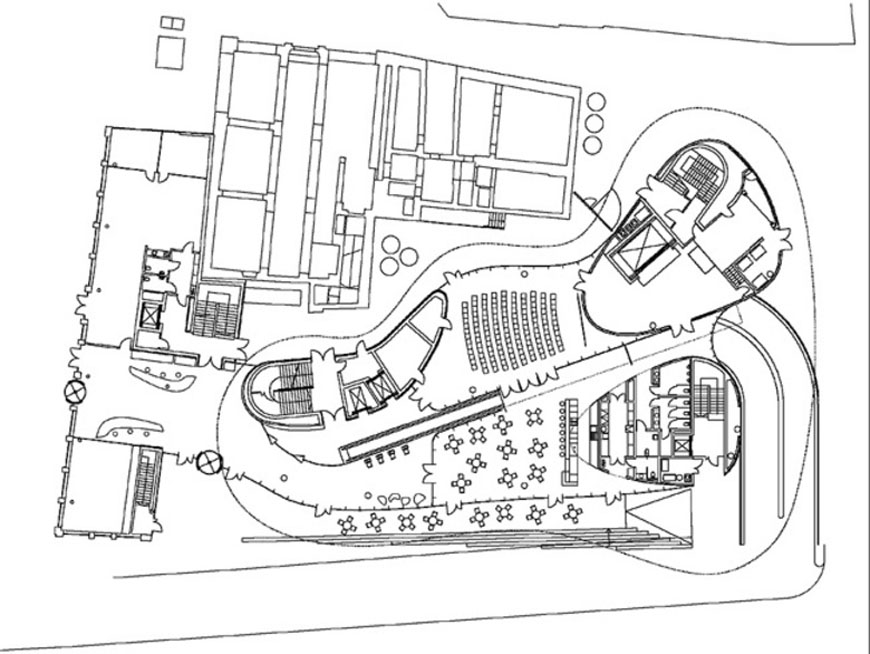

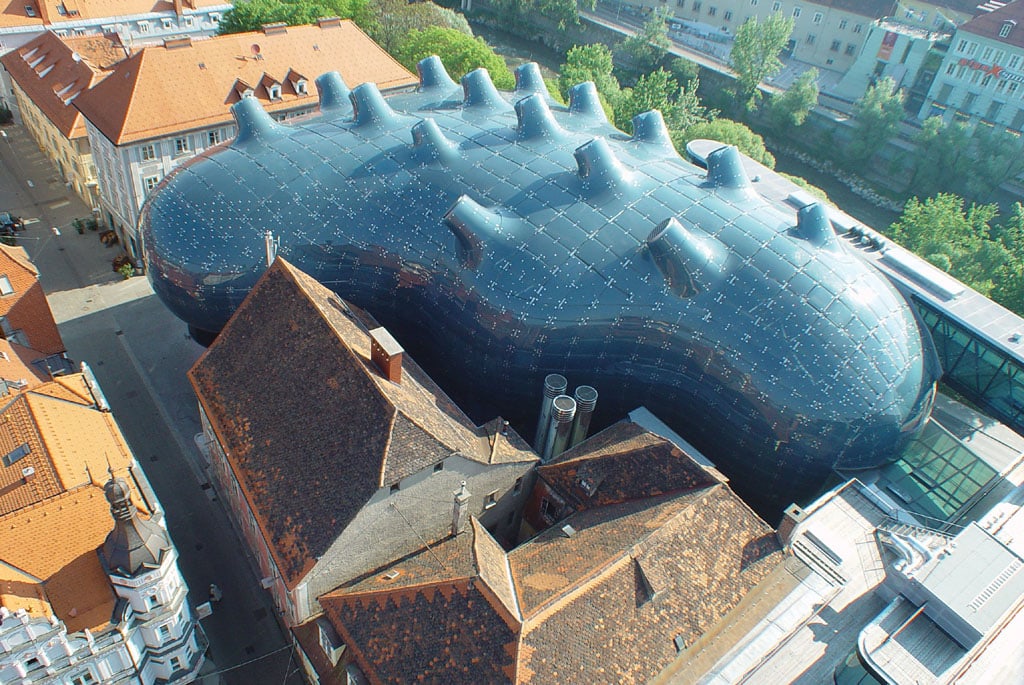




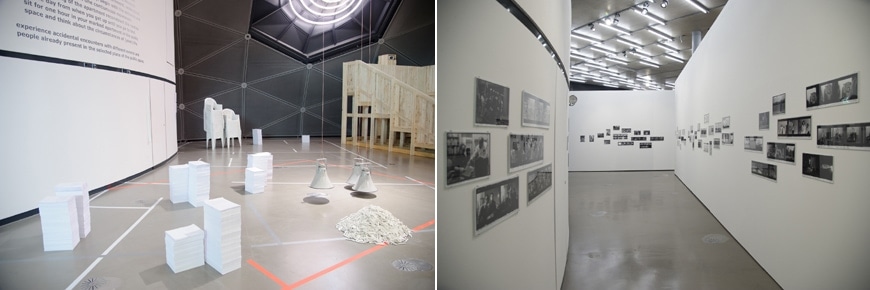
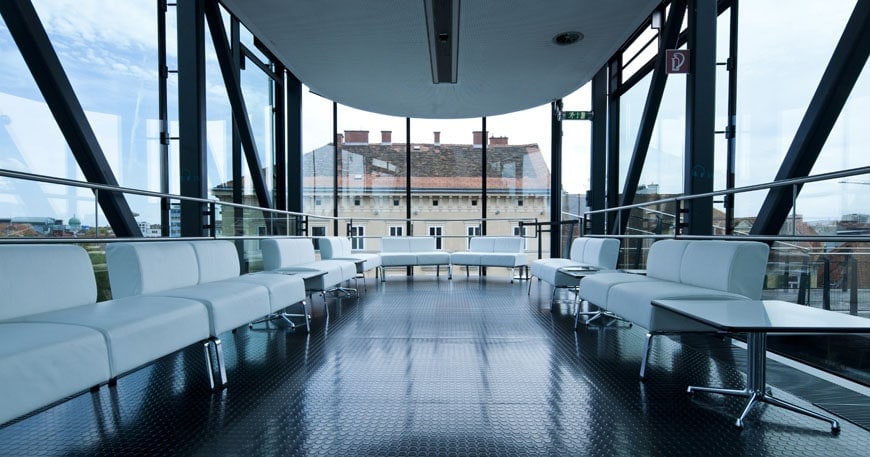
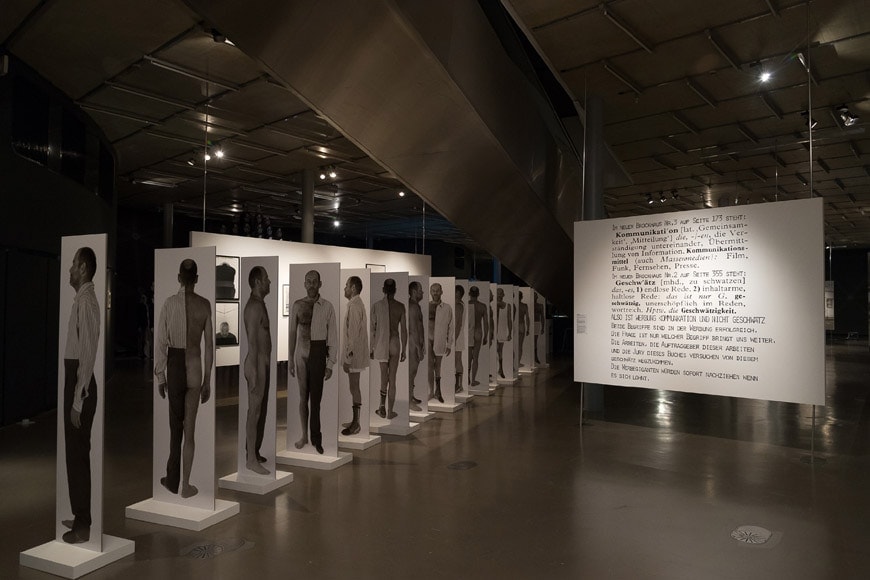

 (13 votes, average: 4.46 out of 5)
(13 votes, average: 4.46 out of 5)